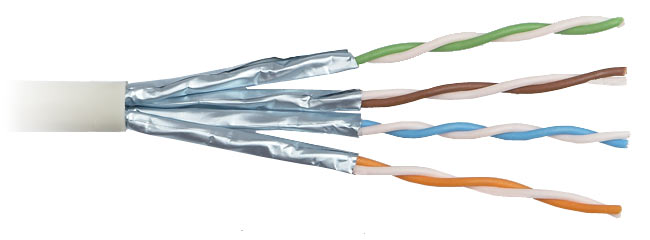In their bid to digitize the offices, companies are resorting to the structured cabling system, which will ultimately provide the network infrastructural support to the businesses’ data and voice requirements. Structured cabling system is a cabling infrastructure which is made up of smaller sub-systems. The subsystems can operate independently or be integrated with others to form a larger cabling system.
Businesses are showing an inclination towards adopting structured cabling system because it is easier to maintain and even scaling is hassle free. The numerous subsystems that function independently can be attached to or detached from the central system at will. In case a business needs to relocate, dismantling the system and moving it to a new location is really easy. The comprehensive cabling system forms the backbone of today’s business’ telecommunications infrastructure.
Structured cabling is defined on the basis of ownership and it begins at the juncture where the ISP or Internet Service Provider terminates. This point is also known as the NID (Network Interface Device) or Demark (point of demarcation). Each structured cabling system is considered to be unique and this is because of the following differences:
- The connection as well as the connection products;
- The building’s architectural structure where the cabling system is installed;
- The primary functions of the cabling system;
- Equipments supported by the system;
- Retrofits and upgrades;
- Requirements of the customer;
- Manufacturer warranties.
Structured cabling is heavily dependent on the type of cables used and there are standard cables for different types of network functions. Some of the cable standard that are used in structured cabling system are as follows:
Category 5e
The category 5e cables are an improvisation on the category 5 cables but both have the same bandwidth capacity. The maximum standard length of the cable is 100 m per TIA/EIA 568-5-A. Some crosstalk specifications have been improved and this is why the Cat 5e cables are being used for the high speed networks. The cables can offer a good performance at up to 100 Mhz and is often used for the fast Ethernet like 10BASE-T and 100BASE-TX.
Cat 6
Cat 6 cable is the standard cable that is used in the Gigabit Ethernet networks. Up to 250 MHz of cable performance can be delivered by the Cat 6 cable and is mostly used for fast Ethernet line such as 100BASE-TX.
Category 6a
The Cat 6a cables have been developed with the latest standards provided by TIA and up to 500 MHz of frequency can be expected. This is an improved cable with stringent crosstalk specifications.
Category 6e
The Cat 6e cable is an improvement upon the Cat 6 cables and has been named in the line of Cat 5e cabling. This cable is not yet recognized by the TIA (Telecommunications Industry Association).
Fiber Optic
Fiber optic cables comprise of a core made with a thin glass cylinder that is protected by a glass cladding. There are two cores; one is used for receiving, while the other is used for transmitting. Fiber optic cables are capable of carrying 3 million full duplex voice signals simultaneously. Users can expect to get data transfer speeds of up to 1Tb/sec.
The usage of all the above cables is based on the type of network i.e. whether it is a fast Ethernet or the high speed networks required to carry voice and data signals. There are several advantages of using structured cabling for the businesses, so the choice of cabling has to be based on the communication requirements.
Michelle Patterson is a blogger more interested in HRMS, Technology, and Business. She has been invited by many companies to see their products and love sharing the knowledge and experience with the world.

2 Comments
Leave a Reply
Cancel reply
Leave a Reply
This site uses Akismet to reduce spam. Learn how your comment data is processed.


















































































































































































Hazel Owens
March 7, 2016 at 3:47 pm
I hadn’t known much about cabling, but my husband has been interested in it, so I’m trying to learn about it too. Structured cabling seems really useful. It sounds really nice to be able to attach or detach subsystems, and that it can be easily relocated. Are there any disadvantages to using structured cabling? Thanks.
Jenna Hunter
June 24, 2019 at 11:54 pm
It was really interesting to learn about different types of cabling. I can imagine that data cabling would be really helpful for a business. It would be really helpful for them to get a professional to help them.